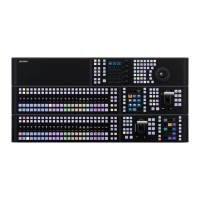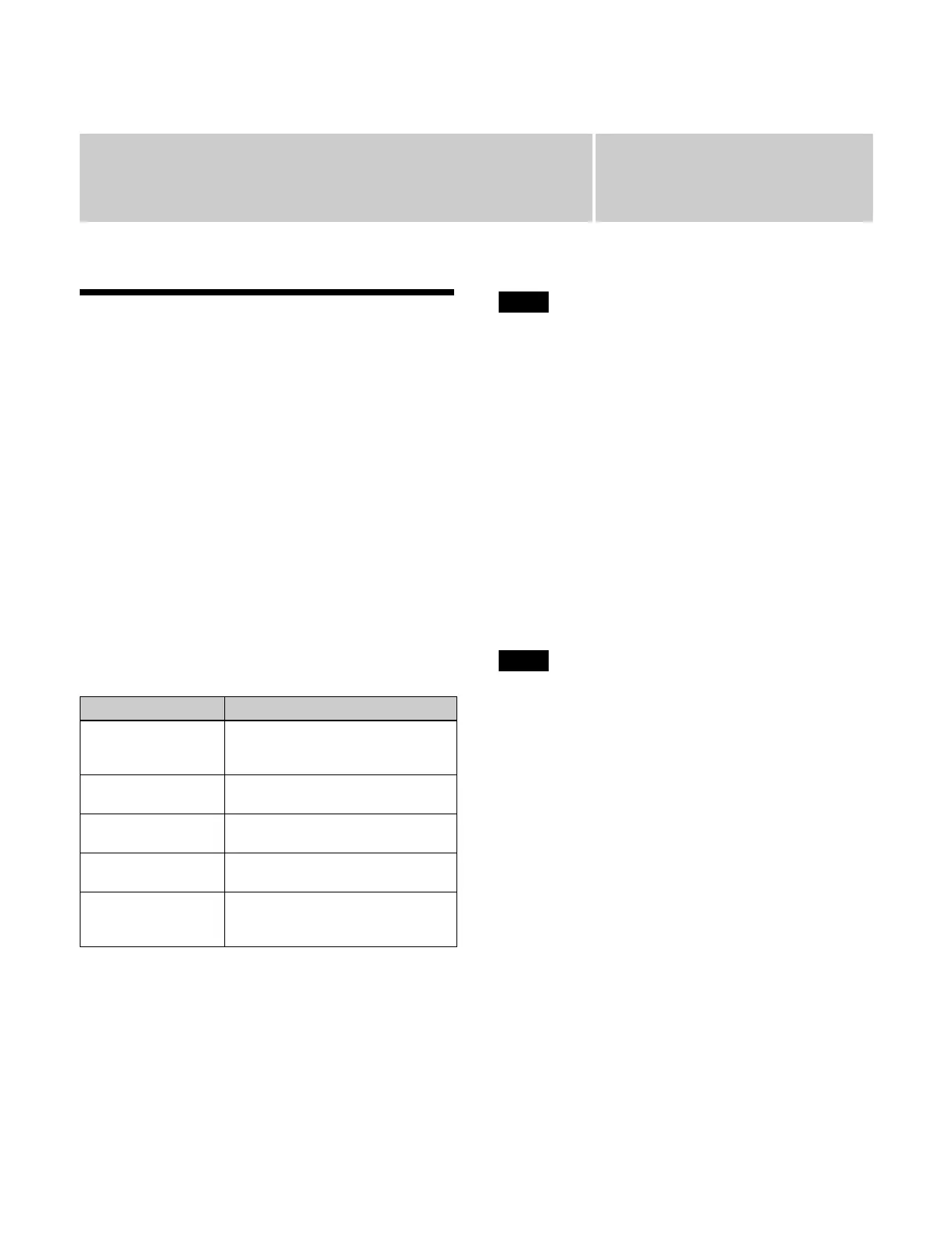Chapter
7
148
Wipes
Overview
A wipe is a function that switches from the current image
to a new image using a wipe pattern.
You can also switch the background and insert/remove
key
s depending on the wipe.
There are two types of wipe: wipes that can be set in a
commo
n transition, and wipes that can be set in an
independent key transition.
Wipe patterns
Wipe patterns are classified into the following groups.
Only standard wipe patterns can be used in an
i
ndependent key transition.
For the pattern images, see “Wipe Pattern List”
(page 491).
Pattern mix
You can create a new pattern by mixing two patterns
(main and sub).
Four types of pattern mix can be created: mix, positive
no
n-additive mix (NAM), negative non-additive mix
(NAM), and morphing mix.
In an independent key transition, a pattern mix cannot be
used.
Dust mix
This applies a diamond dust wipe effect to a pattern
creat
ed using a wipe pattern or pattern mix.
Wipe pattern modifiers
You can add various modifiers to a wipe pattern, such as
setting the wipe direction and pattern position.
Pattern limit
You can specify the transition execution limit of a wipe.
For details, see “Pattern Limit” (page 106).
In an independent key transition, a pattern limit cannot be
used.
Pattern group Description
Standard wipes Patterns consisting of straight lines
v
ertically, horizontally, or diagonally,
and circular patterns
Enhanced wipes Patterns such as stars, hearts, and
r
ound corners
Rotary wipes Patterns that rotate an image about
a p
oint
Mosaic wipes Patterns that divide an image into
sma
ll tiles
Random/diamond
du
st wipes
Patterns that display small tiles
randomly, and patterns that
generate fine particles
Note
Note

